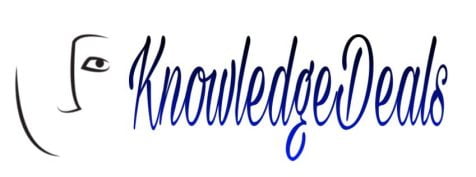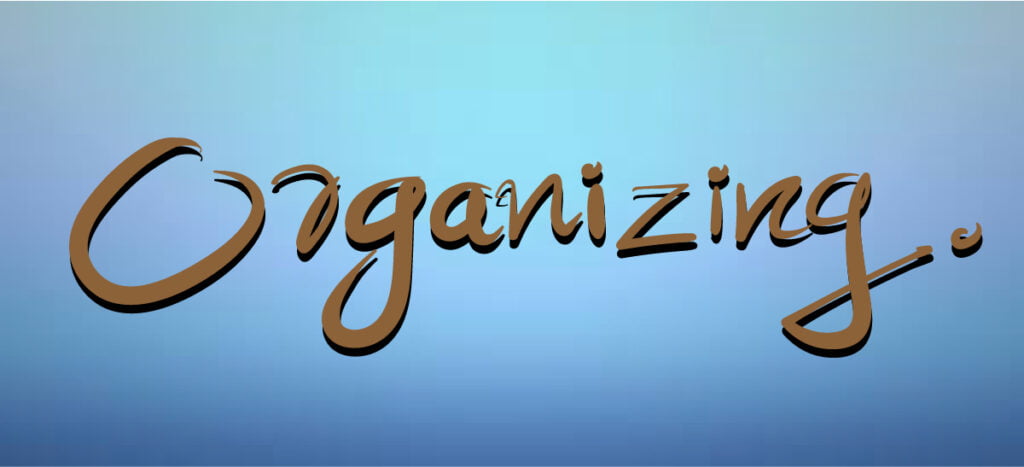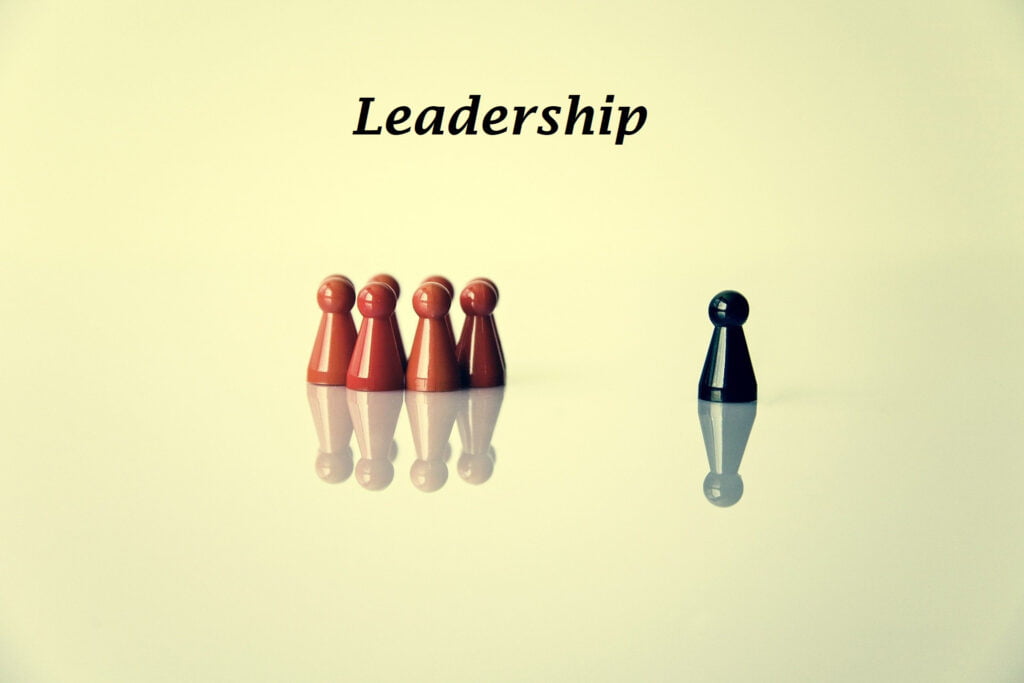Wanna know about procurement supply chain management?, Procurement and supply chain management are two critical pillars of any successful business. While they may sound like complex corporate concepts, they’re simply about getting the right products, at the right price, from the right suppliers—and making sure everything runs smoothly from order to delivery.
But what exactly does this entail? How does it differ from purchasing? And why is it such a vital part of supply chain management?
In this comprehensive guide, we’ll explore every aspect of procurement, breaking it down into easy-to-understand sections. Whether you’re a business owner, a supply chain professional, or just someone curious about how companies manage their resources, this article will give you a clear, in-depth understanding of procurement supply chain management
What is procurement – Definition and purpose
It is the strategic process of sourcing, negotiating, and acquiring goods and services that a business needs to operate. It’s not just about making purchases—it’s about finding the best possible suppliers, securing favorable terms, and ensuring that every transaction adds value to the company.
The purpose of procurement goes beyond just buying materials. It involves:
- Cost Efficiency – Ensuring the company gets the best price without sacrificing quality.
- Risk Management – Avoiding supply chain disruptions by working with reliable suppliers.
- Quality Assurance – Making sure products meet required standards.
- Supplier Relationships – Building long-term partnerships for better deals and reliability.
In essence, procurement is the backbone of a company’s supply chain. Without it, businesses would struggle with inconsistent supplies, inflated costs, and operational inefficiencies.
Key Actitivities in procurement
Procurement isn’t a single task—it’s a series of interconnected activities that ensure a smooth purchasing process. These activities include:
Identifying Needs – Before anything else, businesses must determine what they need to purchase. This could be raw materials for manufacturing, office supplies, or outsourced services like IT support.
Supplier Research & Selection – Once the need is identified, the next step is finding potential suppliers. This involves evaluating vendors based on price, quality, reliability, and reputation.
Negotiation & Contracting – After shortlisting suppliers, professionals negotiate terms, prices, and delivery schedules. Contracts are then drafted to formalize agreements.
Purchase Order Processing – A formal purchase order (PO) is issued to the supplier, detailing the quantity, price, and delivery expectations.
Delivery & Inspection – When goods arrive, they must be inspected to ensure they meet quality standards. Any defects or discrepancies are addressed at this stage.
Invoice Approval & Payment – Finally, invoices are verified against purchase orders, and payments are processed. Proper documentation is maintained for audits and future reference.
Importance of procurement in business
Why is procurement so crucial for businesses? Here’s why it matters more than many realize:
Cost Savings & Profit Maximization – Helps companies negotiate better prices, bulk discounts, and favorable payment terms, directly impacting the bottom line.
Operational Efficiency – A well-managed procurement process ensures that materials arrive on time, preventing production delays and inventory shortages.
Risk Mitigation – By diversifying suppliers and setting clear contracts, businesses reduce the risk of supply chain disruptions due to geopolitical issues, natural disasters, or supplier bankruptcies.
Quality Control – Procurement teams ensure that suppliers meet strict quality standards, preventing defective products from entering the production line.
Compliance & Ethics – It ensures that businesses follow legal and regulatory requirements, avoiding fines and reputational damage.
Types of procurement
Not all procurement is the same. Depending on what a business needs, This can be categorized into different types:
Direct Procurement
Direct procurement involves purchasing materials or goods that are directly used in the production of a company’s products. For example, a smartphone manufacturer buying microchips and screens falls under direct procurement.
Indirect Procurement
Indirect procurement covers goods and services that support business operations but aren’t part of the final product. Examples include office supplies, cleaning services, and software subscriptions.
Goods Procurement
This refers to the acquisition of physical products, such as machinery, raw materials, or inventory.
Services Procurement
Unlike goods, services involves hiring external expertise, such as consultants, maintenance crews, or marketing agencies.
Each type requires a different approach, from supplier selection to contract management.
Direct vs. Indirect Procurement
While both are essential, direct and indirect procurement serve different purposes:
Direct Procurement is tied directly to production. If there’s a delay in direct procurement, manufacturing halts, leading to revenue loss. Companies often build long-term relationships with direct suppliers to ensure stability.
Indirect Procurement, on the other hand, supports day-to-day operations. While disruptions here don’t halt production, they can cause inefficiencies. For example, if a company runs out of printer paper, administrative work slows down. Read more…
Understanding this distinction helps businesses allocate budgets and prioritize supplier relationships effectively.
Goods vs. Services Procurement
The key difference lies in tangibility:
- Goods Procurement deals with physical items, so contracts focus on specifications, delivery timelines, and quality checks.
- Services Procurement involves intangible deliverables, so contracts emphasize performance metrics, timelines, and outcomes.
For example, buying laptops (goods) requires checking hardware specs, while hiring a cybersecurity firm (services) involves evaluating expertise and response times.
The Role of Procurement in Supply Chain Management
Procurement plays a pivotal role in supply chain management (SCM), acting as the bridge between a company’s operational needs and its suppliers. Without an efficient procurement process, supply chains can suffer from delays, inflated costs, and inconsistent quality—ultimately affecting a business’s ability to deliver products to customers on time.
At its core, procurement ensures that businesses acquire the right materials, at the right price, from the right suppliers, and at the right time. But its influence extends far beyond just purchasing. it directly impacts production efficiency, cost control, risk management, and even customer satisfaction.
Ensuring Smooth Material Flow
One of procurement’s most critical functions is maintaining a steady supply of raw materials and components needed for production. If this fails to secure timely deliveries, manufacturing lines can come to a halt, leading to costly downtime and missed deadlines. For example, an automobile manufacturer that doesn’t procure enough steel or electronic components on time will face production delays, which then ripple down to dealerships and customers waiting for their vehicles.
Cost Optimization & Supplier Negotiations
Procurement teams don’t just buy materials—they strategically negotiate contracts to secure the best prices, payment terms, and bulk discounts. By leveraging long-term supplier relationships and competitive bidding, helps businesses to reduce expenses without compromising quality. For instance, a retail company procuring clothing in bulk from overseas suppliers at negotiated rates can offer competitive pricing to customers while maintaining healthy profit margins.
Risk Management & Supply Chain Resilience
Global supply chains are vulnerable to disruptions—whether from geopolitical conflicts, natural disasters, or supplier bankruptcies. A strong procurement strategy mitigates these risks by diversifying suppliers, maintaining safety stock, and establishing contingency plans. For example, during the COVID-19 pandemic, companies with multiple suppliers across different regions fared better than those reliant on a single source. Procurement teams also assess supplier financial health to avoid partnering with unstable vendors.
Quality Assurance & Compliance
Procurement isn’t just about getting materials cheaply—it’s about ensuring they meet quality standards. Poor-quality raw materials can lead to defective products, recalls, and reputational damage. Procurement teams work closely with quality control departments to set supplier standards, conduct audits, and enforce compliance with industry regulations. For example, a food manufacturer must ensure that ingredients meet safety standards before they enter the production line.
Strategic Supplier Relationships
This is not a one-time transaction; it’s about building long-term partnerships with reliable suppliers. Strong supplier relationships lead to better pricing, priority treatment during shortages, and collaborative innovation. For instance, tech companies like Apple work closely with key suppliers to develop custom components, giving them a competitive edge in the market.
Sustainability & Ethical Sourcing
Modern procurement also focuses on sustainability—ensuring suppliers follow ethical labor practices and environmentally friendly processes. Consumers and regulators increasingly demand transparency in supply chains, making responsible procurement a necessity.
For example, fashion brands now audit suppliers to prevent child labor and reduce carbon footprints in production.
Integration with Logistics & Inventory Management
Procurement doesn’t operate in isolation—it coordinates with logistics and inventory teams to balance supply and demand. Overstocking leads to high storage costs, while understocking causes shortages. Procurement uses demand forecasting to align purchases with production schedules, minimizing excess inventory while preventing stockouts.
What Is the Procurement Process? A Step-by-Step Breakdown
The procurement process is the structured series of steps a business follows to acquire goods and services from external suppliers. Far more than just “shopping for the company,” it’s a strategic function that ensures purchases align with budgets, quality standards, and operational needs while maximizing value.
Why the Procurement Process Matters
An effective procurement process:
- Controls costs through strategic sourcing and negotiation
- Maintains quality standards by vetting suppliers
- Reduces risks like supply shortages or contract disputes
- Ensures compliance with company policies and regulations
- Builds strong supplier relationships for long-term benefits
Without a defined process, companies face maverick spending, inconsistent quality, and supply chain vulnerabilities.
The 8 Key Stages of the Procurement Process
1. Identifying Business Needs
Every procurement journey begins with recognizing what the organization requires. This could be:
- Raw materials for manufacturing
- Office supplies for daily operations
- Professional services like IT support
Department heads typically submit purchase requisitions detailing:
- Required items/services
- Quantity needed
- Desired specifications
- Budget constraints
- Timeline requirements
2. Purchase Requisition Approval
Before any spending occurs, the request must be approved by:
- Department managers
- Finance teams (for budget verification)
- Sometimes C-level executives for large purchases
Approval workflows prevent unnecessary spending and ensure alignment with company objectives.
3. Supplier Identification & Selection
Procurement teams then research potential vendors through:
- Existing approved supplier lists
- Market research
- Requests for Quotation (RFQs)
- Requests for Proposal (RFPs) for complex purchases
Key selection criteria include:
- Pricing competitiveness
- Quality certifications
- Delivery capabilities
- Financial stability
- Past performance/references
4. Negotiation & Contracting
Once suppliers are shortlisted, negotiations cover:
- Unit pricing and volume discounts
- Payment terms (net-30, net-60, etc.)
- Delivery schedules
- Quality guarantees
- Penalties for non-compliance
Successful negotiations result in formal contracts that protect both parties.
5. Purchase Order Creation
The approved purchase becomes official through a Purchase Order (PO) containing:
- Itemized list of goods/services
- Agreed prices
- Delivery dates
- Payment terms
- Quality specifications
POs create legal obligations and serve as audit trails.
6. Order Fulfillment & Delivery
Suppliers now fulfill orders while procurement teams:
- Track shipments
- Coordinate receiving logistics
- Verify deliveries match POs
- Inspect for damage/defects
This stage often involves warehouse and quality control teams.
7. Three-Way Matching & Invoice Approval
Before payment, accounts payable verifies:
- Purchase Order (what was ordered)
- Receiving Report (what was delivered)
- Supplier Invoice (what’s being charged)
This “three-way match” prevents overpayments and errors.
8. Payment & Record Keeping
Final steps include:
- Processing payments per contract terms
- Updating financial records
- Filing all documentation for:
- Future audits
- Tax compliance
- Supplier performance reviews
A well-designed procurement process does more than facilitate purchases—it transforms spending from a cost center into a strategic advantage. By systematically managing how your organization acquires goods and services, you gain:
✓ Better cost control
✓ Higher quality inputs
✓ More reliable supply chains
✓ Stronger supplier relationships
✓ Improved regulatory compliance
Stages of Procurement
This evolves through three key stages:
- Tactical Buying – Reactive, short-term purchases.
- Strategic Sourcing – Long-term supplier partnerships for better pricing.
- Supplier Relationship Management (SRM) – Ongoing collaboration to improve performance.
7 Principles of Effective Procurement
This is far more than simply purchasing goods and services—it’s a strategic business function that requires careful governance and ethical standards. The seven core principles of procurement provide a framework for organizations to acquire resources efficiently while maintaining integrity, competitiveness, and value. These principles guide professionals in both public and private sector organizations worldwide.
1. Accountability
Accountability ensures that every decision and action can be justified and traced to responsible parties. This principle requires:
- Clear documentation of all procurement activities
- Defined roles and responsibilities for decision-makers
- Audit trails for every transaction
- Transparent reporting structures
In practice, accountability means procurement officers must be able to explain why they selected specific suppliers, how they determined fair pricing, and what process they followed. Organizations implement this through:
- Approval workflows with multiple stakeholders
- Digital record-keeping systems
- Regular internal audits
- Separation of duties between requisition, approval, and payment functions
When accountability is strong, organizations reduce fraud risks while building trust with both suppliers and internal stakeholders. It transforms procurement from a opaque process into a professional function that withstands scrutiny.
2. Competition
The competition principle mandates that procurement processes should encourage open and fair competition among potential suppliers. This involves:
- Publicly advertising procurement opportunities when appropriate
- Providing equal information to all bidders
- Establishing objective evaluation criteria
- Preventing favoritism or preferential treatment
Competitive procurement delivers several key benefits:
- Better Pricing: Multiple bidders drive down costs through market forces
- Higher Quality: Suppliers must compete on value, not just price
- Innovation: New vendors bring fresh solutions to organizational needs
- Risk Mitigation: Multiple sources prevent supply chain bottlenecks
Organizations implement this principle through tools like:
- Requests for Proposals (RFPs)
- Reverse auctions
- Public tender processes
- Supplier pre-qualification programs
However, competition must be balanced with practicality—some situations like emergency purchases or proprietary technologies may require limited competition.
3. Value for Money
Value for money represents the optimal balance of cost, quality, and sustainability over the entire lifecycle of a purchase. This principle requires considering:
- Total cost of ownership (including maintenance and operating costs)
- Quality and fitness for purpose
- Delivery timelines and reliability
- Environmental and social impacts
- Potential for innovation and continuous improvement
Procurement professionals use various techniques to achieve value for money:
- Lifecycle cost analysis
- Should-cost modeling
- Value engineering
- Make-or-buy analysis
- Total value assessment frameworks
This principle prevents the common pitfall of selecting the lowest bidder without considering long-term costs or quality implications. For example, cheaper equipment might have higher maintenance costs, making it more expensive over time.
4. Ethics
Ethical procurement ensures all activities meet high standards of integrity and professionalism. Key aspects include:
- Preventing conflicts of interest
- Rejecting bribery and kickbacks
- Maintaining confidentiality
- Ensuring fair treatment of all suppliers
- Complying with all applicable laws and regulations
Common ethical challenges in procurement include:
- Gifts and hospitality from suppliers
- Revolving door employment (procurement staff moving to supplier roles)
- Insider information misuse
- Pressure to favor certain suppliers
- Transparent complaint processes
Strong ethics build reputation, reduce legal risks, and create a level playing field that attracts high-quality suppliers.
5. Transparency
Transparency means operating in a way that allows stakeholders to understand and have confidence in procurement decisions. This involves:
- Clear, publicly available procurement policies
- Documented decision-making processes
- Accessible tender opportunities
- Published award criteria and outcomes
- Channels for supplier feedback and complaints
6. Efficiency
The efficiency principle focuses on achieving procurement objectives with optimal use of resources. This encompasses:
- Streamlined approval workflows
- Elimination of redundant processes
- Leveraging technology for automation
- Standardization of frequently purchased items
- Strategic consolidation of spend
Key efficiency metrics include:
- Cycle time from need identification to order fulfillment
- Cost per procurement transaction
- Percentage of spend under management
- Contract utilization rates
7. Risk Management
Modern procurement must systematically identify and mitigate various risks including:
- Supply chain disruptions
- Supplier financial instability
- Quality failures
- Cybersecurity threats in digital procurement
- Geopolitical and regulatory changes
- Reputational risks from supplier practices
Effective risk management involves:
- Comprehensive supplier due diligence
- Supply chain mapping
- Business continuity planning
- Contractual protections (penalty clauses, alternative sourcing requirements)
- Regular risk assessments
Difference Between Procurement and Supply Chain Management
While procurement focuses on acquiring goods/services, supply chain management (SCM) covers the entire lifecycle—from sourcing to production, logistics, and delivery.
- Procurement = Buying
- SCM = Buying + Manufacturing + Shipping + Distribution
Procurement is a subset of SCM, but both are essential for smooth operations.
Difference Between Procurement and Purchasing
Many use these terms interchangeably, but they’re different:
- Procurement is strategic, involving supplier relationships, contracts, and long-term planning.
- Purchasing is transactional—just the act of buying goods.
Think of procurement as the “big picture” and purchasing as one step within it.
Procurement KPIs
Purchase Order Cycle Time
- This KPI measures how long it takes from creating a purchase request to approving the final order. A shorter cycle means faster processing, while delays can hold up operations. Automating approvals and simplifying steps can help speed this up.
Supplier Lead Time
- This tracks the time between placing an order and receiving the goods. Short, reliable lead times keep inventory lean and production smooth. Long delays may require keeping extra stock or finding faster suppliers.
Supplier Defect Rate
- This shows what percentage of delivered items are faulty or don’t meet quality standards. A high defect rate means wasted time and money on returns or rework. Working closely with suppliers on quality control helps reduce defects.
Fulfillment Accuracy
- This checks whether suppliers deliver exactly what was ordered—right items, quantities, and specs. Mistakes can disrupt operations, so tracking accuracy helps identify which suppliers need improvement.
ROI of Procurement
- This measures whether the money saved through better purchasing outweighs the cost of running procurement. Strong ROI means smart negotiations, efficient processes, and good supplier deals are paying off.
Each KPI highlights a different aspect of procurement performance, helping businesses spot problems and improve over time.




